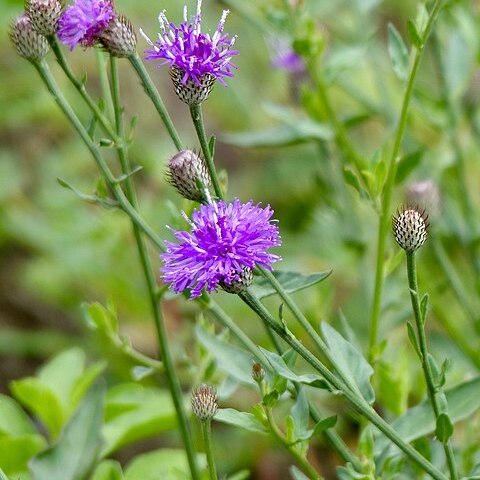A bushy, leafy annual herb up to 1 m tall. Leaves up to 60 x 4 mm, or occasionally the lowermost broader, linear or linear-lanceolate, minutely pubescent or subglabrous, margins entire. Heads campanulate, up to 2 cm across, on bracteate peduncles, several in open corymbs. Involucral bracts lanceolate to oblong-lanceolate, the inner abruptly contracted at the apex, all bristle-tipped, more or less squarrose, squalling the pappus. Flowers purple. Achenes c. 4 mm long, pilose; outer pappus of very short, narrow scales, inner of long, subplumose bristles.
A herb. It grows each year from seed. It has slender branches. These are spreading and slightly woody. It can grow up to about 1 m high. The leaves narrow towards the base. The tip is pointed. There are a few teeth along the edge. The lower leaves are sword shaped. They are 5 cm long by 1 cm wide. The upper leaves are more narrow. The flower heads are on slender stalks. They are purple.
Annual herb, up to 1 m high. Leaves linear or linear-lanceolate, margins entire. Heads in open corymbs. Involucral bracts long-acuminate, bristle-tipped, persistently woolly araneose. Outer pappus of short linear seta-like scales, inner pappus of short barbellate setae. Achenes densely silvery strigose. Flowers purple.

